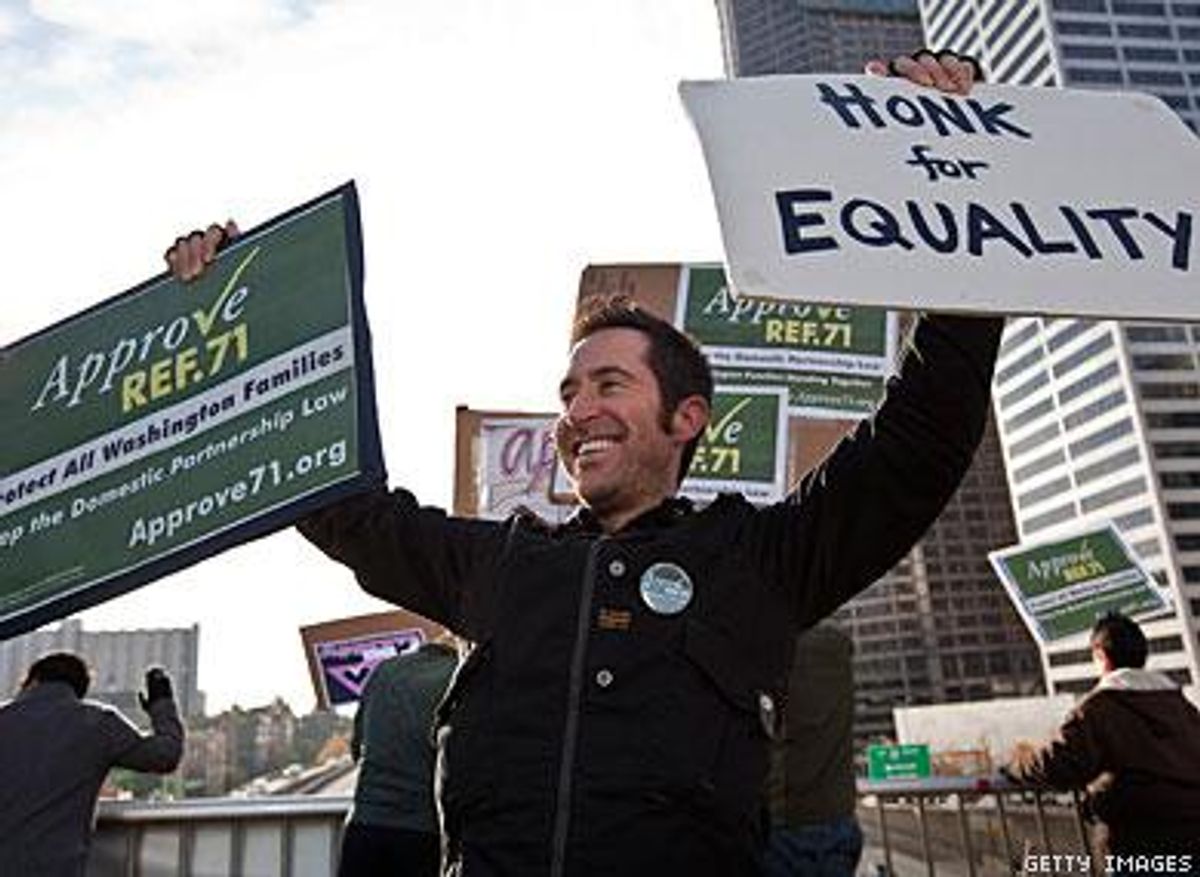World
Referendum 71 Vote Studied

By continuing to use our site, you agree to our Private Policy and Terms of Use.

A new study reveals echoes of the red state-blue state divide in last month's vote for Referendum 71, the ballot measure that upheld a law granting expanded domestic-partnership rights to same-sex couples in Washington State.
The study by Dick Morrill of the University of Washington looks at who voted for Referendum 71, which passed by 53% to 47%, or a margin of 113,000 votes, some 104,000 of which came from the Seattle area.
Morrill finds that geographically, Seattle and its King County electorate carried the measure, whereas small towns and rural areas largely opposed Referendum 71.
In terms of economic and social indicators, according to Morrill, "Here are the strongest positive correlations for people who voted for R-71: users of transit, non-traditional households, singles, same-sex households, college graduates, managerial professionals, aged 20-39, and Asian. The strongest negative correlations (opposing 71) are: drivers of SOVs, traditional families, aged under 20, born in Washington, high-school education only, Hispanics, laboring and craft occupations."
Read more about the study here.